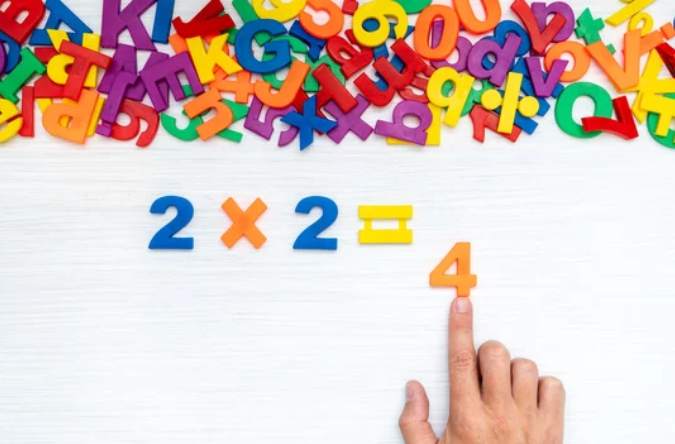Mastering multiplication tables is a crucial milestone for 3rd graders, as it forms the foundation for more advanced math concepts. However, rote memorization can be tedious for young learners. To make the learning process effective and enjoyable, teachers and parents should incorporate engaging strategies, interactive activities, and well-structured worksheets. Here’s a step-by-step guide to teaching multiplication tables to 3rd graders.
1. Start with the Basics
Before diving into memorization, ensure that students understand the fundamental concept of multiplication. Explain that multiplication is repeated addition. For example:
- 3 × 2 means adding 3 twice: 3 + 3 = 6.
- 4 × 3 means adding 4 three times: 4 + 4 + 4 = 12.
Using visual aids like counters, beads, or drawings can help students grasp this concept more easily.
Check out our Free Multiplication Worksheets
2. Introduce Skip Counting
Skip counting is a simple and effective method to introduce multiplication tables. Teach students to count by 2s, 5s, and 10s first, as these patterns are the easiest to recognize.
- Counting by 2s: 2, 4, 6, 8, 10…
- Counting by 5s: 5, 10, 15, 20, 25…
- Counting by 10s: 10, 20, 30, 40, 50…
Once students are comfortable with these, introduce other numbers gradually.
3. Use Multiplication Charts and Tables
A multiplication chart is a powerful tool for visual learners. Provide a multiplication table and encourage students to identify patterns within it. For example:
- The commutative property (e.g., 3 × 4 = 4 × 3) reduces the number of facts they need to memorize.
- The diagonal symmetry in a multiplication chart can make learning easier.
Students can color-code or highlight patterns in the chart to reinforce their understanding.
4. Engage with Hands-On Activities
Children learn best through play and interaction. Incorporate fun, hands-on activities to keep them engaged:
- Flashcards: Create flashcards with multiplication facts and let students practice in pairs.
- Dice Games: Roll two dice and multiply the numbers together.
- Array Building: Use objects like buttons or LEGO bricks to form multiplication arrays (e.g., a 3 × 4 array shows 3 rows of 4 objects).
- Multiplication Bingo: A fun classroom game where students mark the correct answer on their bingo cards.
5. Implement Mnemonic Devices and Rhymes
Rhymes, songs, and mnemonic devices help children retain multiplication facts. Some popular ones include:
- “Six times eight is forty-eight” (rhyming pattern).
- Times Tables Songs available on platforms like YouTube.
- Finger tricks for the 9 times table (e.g., for 9 × 4, fold the 4th finger, leaving 3 fingers before it and 6 after it, representing 36).
Using engaging memory aids makes learning less overwhelming.
6. Reinforce Learning with Worksheets
Worksheets provide structured practice and help students track their progress. Include different types of worksheets, such as:
- Fill-in-the-blank multiplication grids
- Matching exercises (e.g., 7 × 6 → 42)
- Word problems incorporating multiplication
- Color-by-number multiplication activities
Offering a mix of challenge levels ensures all students stay motivated.
7. Use Online Games and Apps
Technology offers an engaging way to reinforce multiplication skills. Some recommended free online resources include:
- Multiplication.com: Interactive games and quizzes.
- Khan Academy: Video tutorials and practice exercises.
- Math Playground: Fun multiplication puzzles.
- Prodigy Math Game: Adaptive learning in an adventure-based format.
Students who enjoy digital learning will find these tools beneficial for self-paced practice.
8. Apply Real-Life Scenarios
Connecting multiplication to everyday life helps students see its importance. Some practical applications include:
- Cooking: Measuring ingredients (e.g., doubling a recipe requires multiplying ingredients by 2).
- Shopping: Understanding price calculations (e.g., “If one notebook costs $3, how much do 4 notebooks cost?”).
- Sports: Keeping score (e.g., “Each goal earns 2 points. If a player scores 5 goals, how many points do they have?”).
Real-world connections make learning more meaningful.
Try out our Free Math and English Worksheet Generators
9. Encourage Daily Practice
Consistent practice is key to mastery. Set aside a few minutes each day for multiplication drills. Some ideas include:
- Morning Math Time: Solve a few multiplication problems as a warm-up.
- Daily Challenges: Set a goal, such as learning one new table per week.
- Parental Involvement: Encourage parents to quiz their children during car rides or while setting the dinner table.
Short, frequent practice sessions are more effective than cramming.
10. Celebrate Progress and Make Learning Fun
Learning multiplication should be a rewarding experience. Celebrate students’ progress with:
- Reward charts: Stickers for mastering each multiplication table.
- Certificates: Print a certificate when they complete all tables.
- Friendly competitions: Have multiplication races or team challenges in class.
- Positive reinforcement: Praise effort and improvement rather than just correct answers.
A fun and supportive environment builds confidence and enthusiasm for learning.
Teaching multiplication tables to 3rd graders requires patience, creativity, and the right mix of strategies. By incorporating hands-on activities, visual aids, engaging worksheets, and real-life applications, you can help students develop a solid foundation in multiplication. Most importantly, fostering a positive attitude and making learning enjoyable will ensure long-term retention and success.
By following these tips, you can turn multiplication into an exciting journey for young learners!
